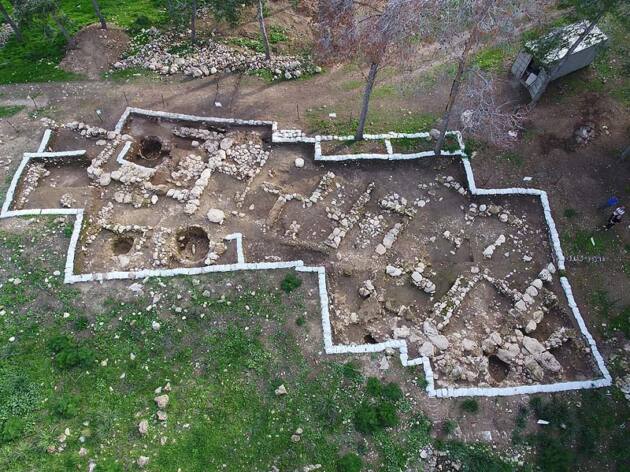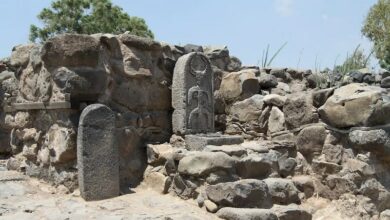Biblical judge Gideon named in newly discovered inscription

A rare 3,100-year-old inscription was discovered during excavations in southern Israel and is linked to the biblical judge Gideon.
The partial inscription, written in ink on a small pottery jug, was recovered in the Shahariya forest, the Israel Antiquities Authority announced on Monday.
The approximately one-quart vessel may have contained oil, perfume or medicine, the IAA said, and the deciphered letters—spelling “Jerubbaal” in alphabetic script dating from around 1,100 BCE—likely pointed to the name of the owner.
Deciphered by epigraphic expert Christopher Rolston of George Washington University in Washington, D.C., the inscription shows the letters “yod” (broken at the top), “resh,” ”bet,” “ayin,” “lamed” and remnants of other letters, indicating that the original was longer.
“The name Jerubbaal is familiar from biblical tradition in the Book of Judges as an alternative name for the Judge Gideon ben Yoash,” explained archaeologists Yossef Garfinkel and Sa’ar Ganor, two of four directors of the excavations.
Who was Gideon?
“Gideon is first mentioned as combating idolatry by breaking the altar to Baal and cutting down the Asherah pole. In biblical tradition, he is then remembered as triumphing over the Midianites, who used to cross over the Jordan to plunder agricultural crops. Gideon is known to have organized a small army of 300 soldiers and attacked the Midianites by night near Ma’ayan Harod,” they said.
TRAVEL: Travel with Metro Voice to Israel!
“The name Yerubbaal only appears in the Bible in the period of the Judges, yet now it has also been discovered in an archaeological context, in a stratum dating from this period. Similarly, the name Ishbaal, which is only mentioned in the Bible during the monarchy of King David, has been found in strata dated to that period at the site of Khirbat Qeiyafa. The fact that identical names are mentioned in the Bible and also found in inscriptions recovered from archaeological excavations shows that memories were preserved and passed down through the generations,” Christopher Rolston of George Washington University stated.
The inscription shows that the script was preserved at Khirbat er-Ra‘i, roughly 2 miles from Lachish and the largest site in the area at the time of the Judges, during the transition from the Canaanite to the Israelite and Judahite cultures.
According to the IAA, the find contributes to understanding of the spread of alphabetic script in the transition from the Canaanite to the Israelite period.
–JNS and wire services








